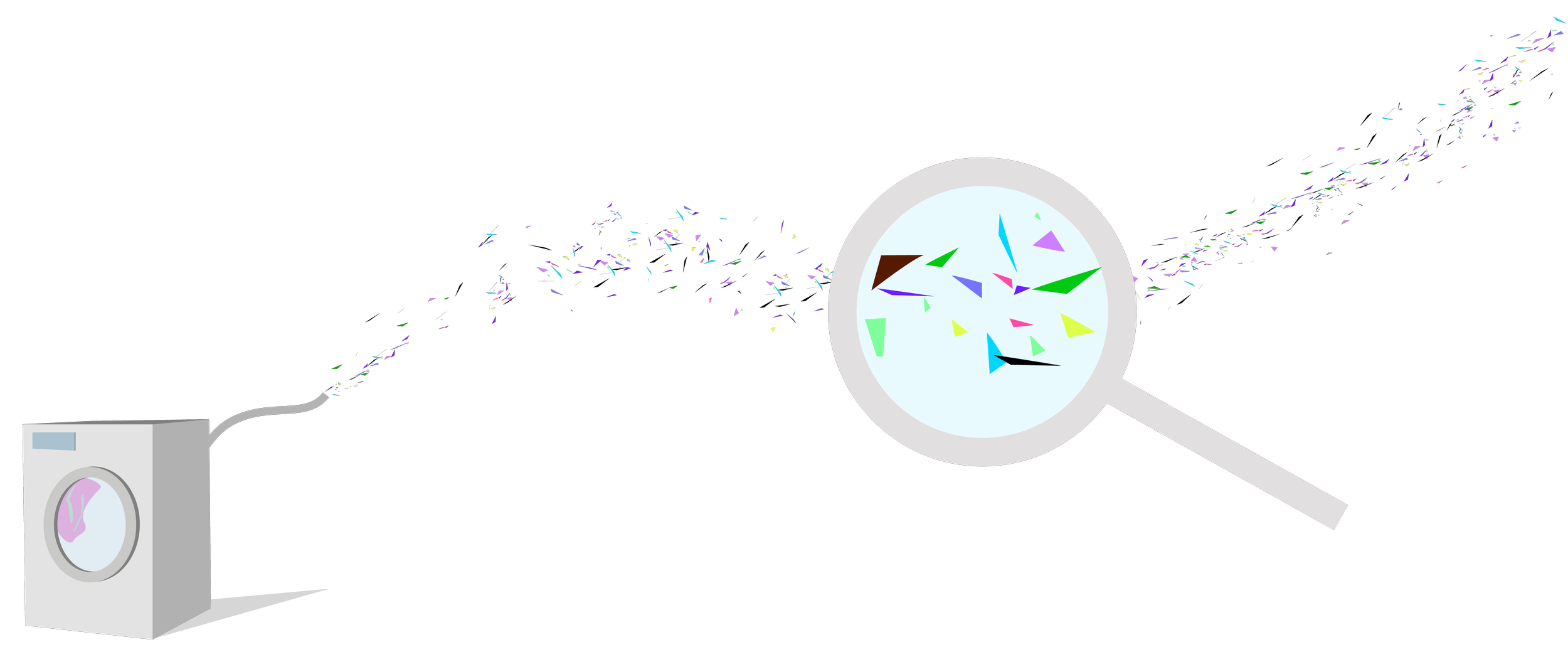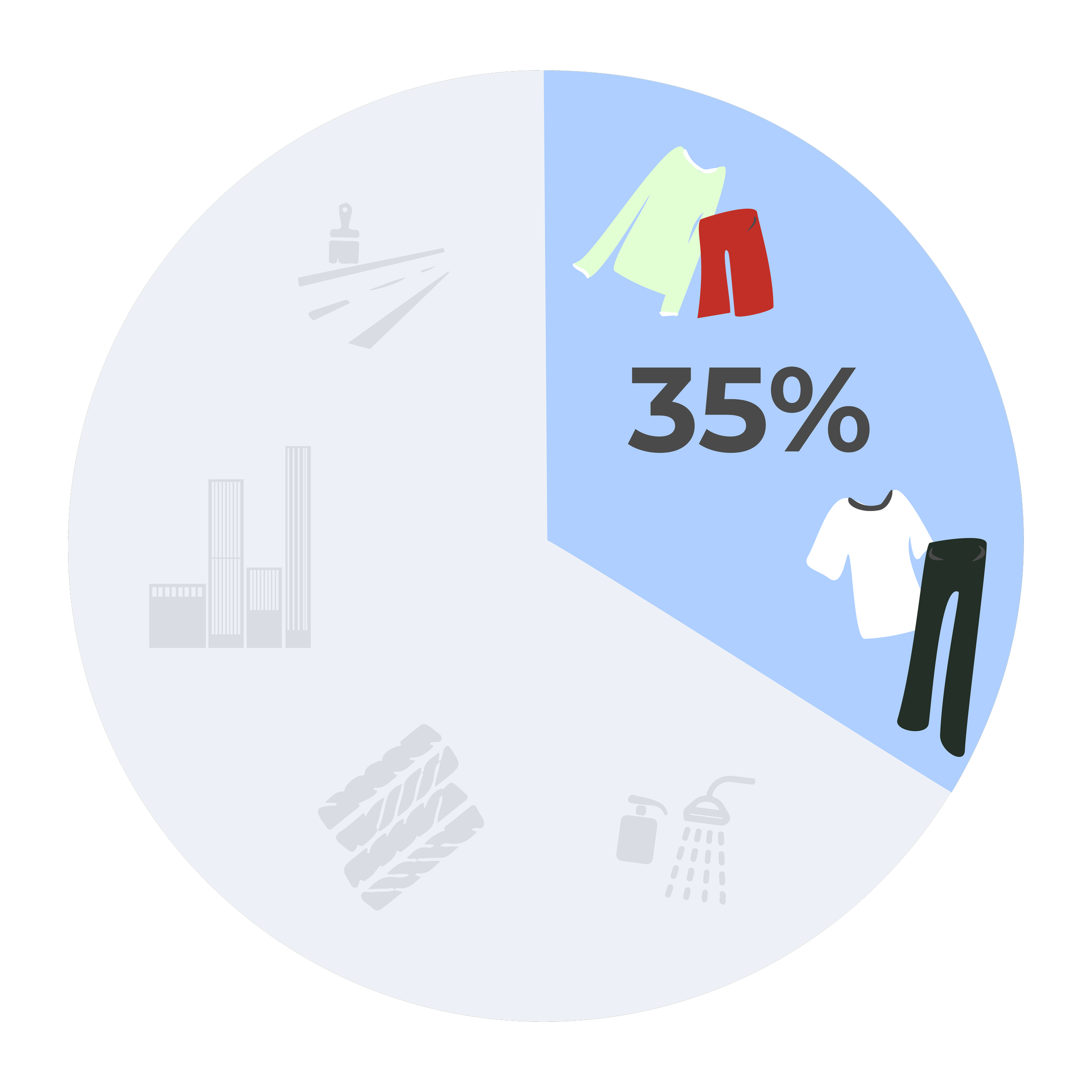
Microplastics have become a
MACRO problem.
Tiny yet harmful plastic particles that pollute the environment, microplastics come from a variety of sources, including beauty products, city dust, and broken down particles from plastic products. The microplastics that concern us come from synthetic textiles. Every time these textiles are washed, millions of synthetic (microplastic) fibers are released from our washing machines, into the waterways and oceans.
These synthetic fibers account for about 35% of primary microplastics in the world’s oceans,
Making them the predominant primary microplastic ocean pollutant.
Less than 5 millimetres long, microplastics might seem like a small issue in the grand scheme of sustainability. However as research is growing, they are popping up more frequently, and in unimaginable places. They have been found floating around deep crevices in the oceans, buried in the food we eat and even at the highest point on Earth, Mount Everest.
An accumulating threat to marine ecosystems.
Scientists know that an increasing number of marine species ingest microplastics, from water fleas to dolphins and whales. Previous and ongoing research shows negative effects on animals and their environments, which will continue to worsen as plastic fails to biodegrade and it remains a part of our daily lives.
Microplastics and marine species in petri dish, photograph David Liittschwager ©
Humans consume a credit card's worth of plastic every week.
Studies show that microplastics are not only dangerous to underwater life, but for humans as well. Consuming on average a credit card’s worth every week, microplastics can cause damage to human cells such as allergic reactions and cell death. In recently announced research, microplastics have even been found in our bloodstreams.
Synthetic textiles include everything from our gym clothes to cleaning utilities such as mops and cloths. As long as we continue to use these items, the microplastic pollution problem will keep growing. We must work towards target 1 of Sustainable Development Goal 14, to prevent and significantly reduce marine pollution of all kinds. It is for this reason that we have made microplastic filtration a key feature of the Mimbox.

More than 99% of the world’s water is unusable by humans.
The remaining ~1% is liquid freshwater. This is mainly groundwater that supports our drinking water supplies, sanitation, industry, agriculture and ecosystems. It is a limited resource and is being progressively overused and mismanaged in many areas, which is where problems arise. The world is being threatened by a global water crisis.
In 2023, around 2 billion people
did not use safely managed drinking water, highlighted by the World Health Organisation.
By 2050,
over 5 billion
could be affected by water scarcity, projected by the UN.
Our reliance on liquid freshwater will only increase. This is mainly due to a growing demand from all sectors, combined with rising variation in rainfall patterns. You can read more about it in the UN’s World Water Development Report on groundwater.
It’s about how we use this 1% that is going to make a difference.
For us at Mimbly, this started by asking :
Do we need to use drinkable water to clean our clothes?
After countless hours of prototyping and iterating, we found that the answer is no. Without compromising the quality of the wash, we design and develop laundry solutions which use water more efficiently. This can help make a difference now and for the future. Our first solution, the Mimbox, prevents water wastage by allowing the best quality water to be reused.
Sustainable Development Goals
United Nations SDGs that are linked to our mission include:
We believe that
sustainable societies are formed from a multitude of actions coming together to create glocal change.
We want to make it easy for people to adapt to these challenges of water usage and plastic pollution. Mimbly can help companies with larger scale laundry facilities take this step and become a part of the movement towards sustainable futures.













